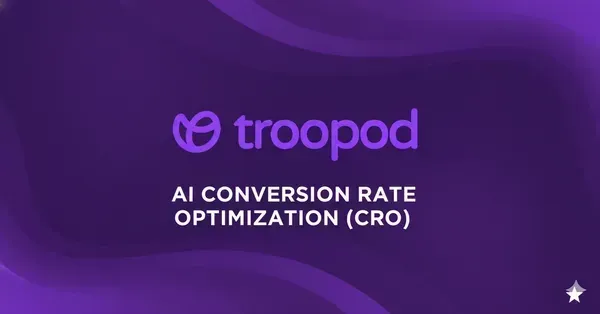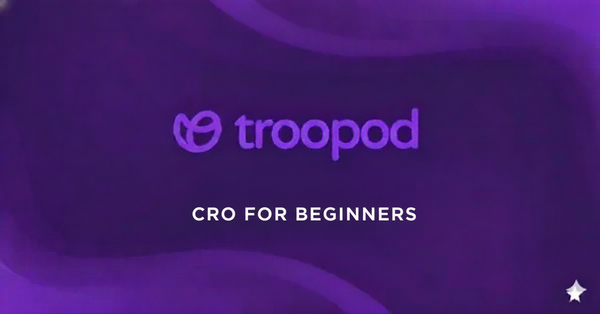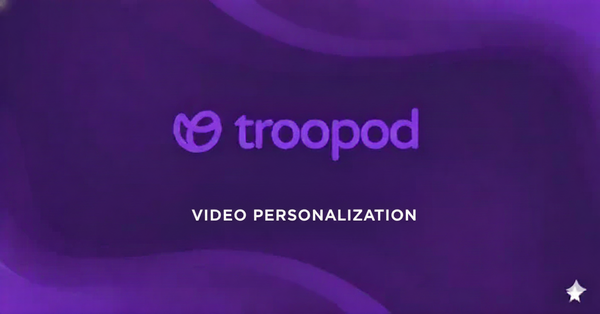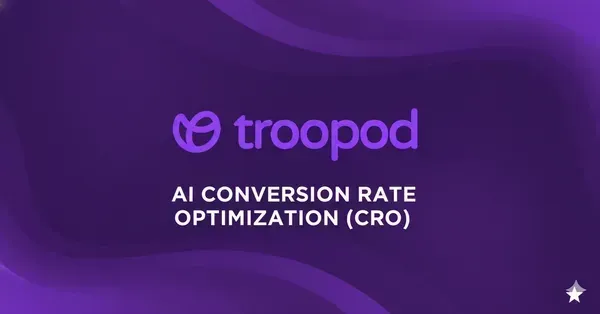Shopify Multi-Variant Personalization: The Technical Guide to AI-Powered Product Recommendations
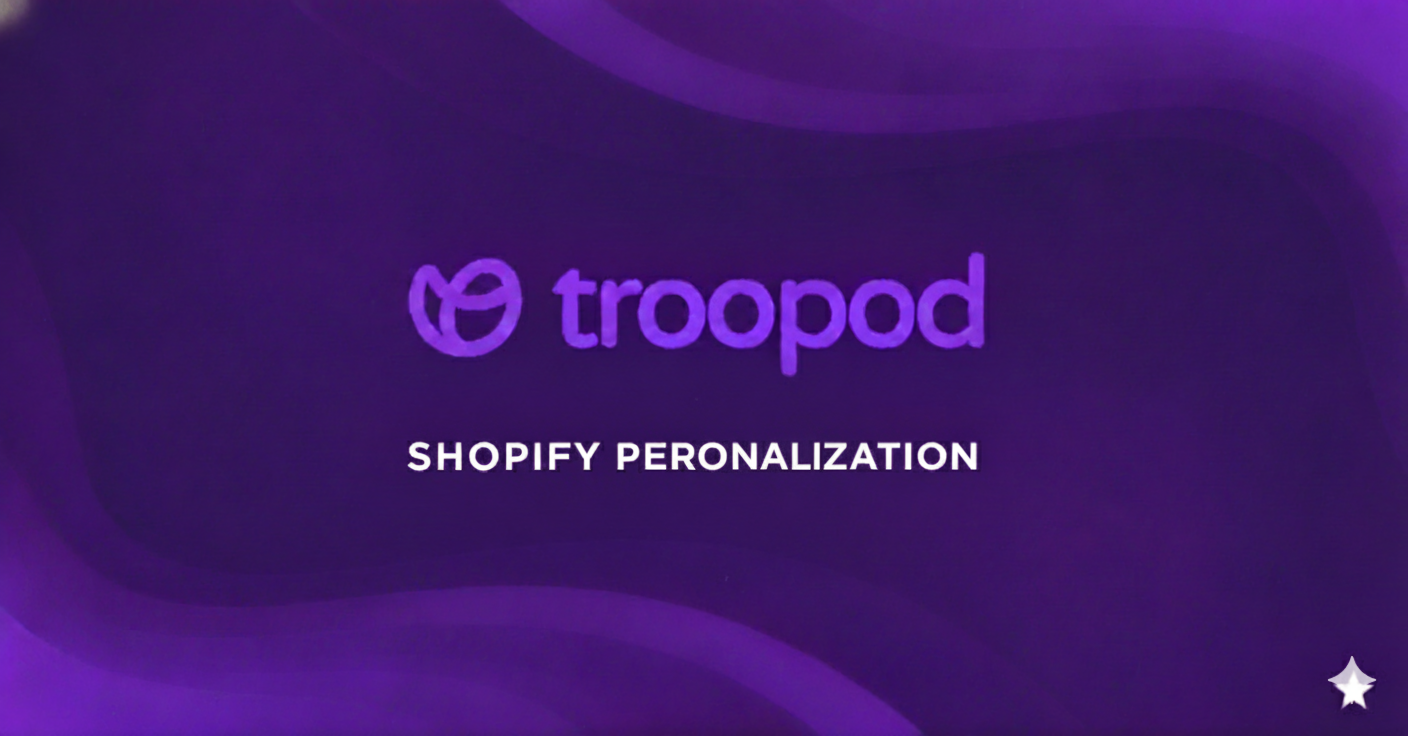
The ₹16 Lakh Mistake Hidden in Your Product Recommendations
Two fashion brands on Shopify. Both showing "You might also like" recommendations.
Brand A (Generic Recommendations): "Customers who bought this also bought..."
- Same recommendations for everyone
- Based only on past purchase patterns
- Updated once daily
- Conversion on recommendations: 2.1%
Brand B (AI Multi-Variant Personalization): Different recommendations for each visitor based on:
- Current browsing behavior (real-time)
- Device and time patterns
- Location and preferences
- Cart contents and intent signals
Result: 7.8% conversion on recommendations
The difference? ₹16.4 lakhs monthly revenue from the same traffic.
After implementing AI-powered multi-variant personalization for 73 Shopify brands across India, we discovered something that fundamentally changes how product recommendations should work: The "also bought" approach is leaving massive revenue on the table.
Because showing the same recommendations to every visitor—regardless of whether they're a first-time browser from tier 2 or a returning premium buyer from Mumbai—is optimization malpractice.
This is the complete technical guide to building AI-powered multi-variant product recommendations on Shopify that actually convert, with real implementation code, architecture diagrams, and tactics used by brands like Bombay Shaving Company, Mokobara, and Perfora to boost recommendation conversion by 3-4x.
Curious how much revenue your current recommendations are leaving on the table?
Why Shopify's Default Recommendations Fail (The Data)
Let's start by understanding why most Shopify recommendations underperform.
The "Related Products" Problem
Shopify's Default Logic:
- Based on: Product collections and tags
- Criteria: Products in same collection
- Personalization: Zero
- Updates: Manual (when you change collections)
Delhi Fashion Brand Reality:
Product: Women's ethnic dress (₹2,400)
Shopify shows same recommendations to:
- 18-year-old student from Indore (mobile, 10 PM, first visit)
- 35-year-old working professional from Mumbai (desktop, 2 PM, previous customer)
- 50-year-old homemaker from Bangalore (tablet, morning, browsing wedding wear)
Result: 1.8% click-through rate on recommendations
Why it fails:
- 18-year-old wants budget options (₹800-1,500)
- 35-year-old wants premium workwear (₹3,000-5,000)
- 50-year-old wants occasion wear (₹8,000-15,000)
Showing same products = relevant to none.
The "Also Bought" Trap
Shopify Apps Like Bold, Wiser, Frequently Bought:
- Based on: Historical purchase data
- Logic: If customer bought A + B together, recommend B when viewing A
- Better than default but still limited
Bangalore Beauty Brand Example:
Product: Anti-aging night cream (₹1,800)
"Also Bought" shows:
- Face cleanser (₹600) - 78% co-purchase rate
- Sunscreen (₹900) - 64% co-purchase rate
- Moisturizer (₹1,200) - 58% co-purchase rate
Problem: These are historical patterns, not personalized intent.
Visitor A (age 25, acne-prone, looking for hydration): Sees: Anti-aging recommendations (wrong for age, wrong concern) Clicks: 0 Purchase: 0
Visitor B (age 45, dry skin, anti-aging focus): Sees: Same anti-aging recommendations (perfect match) Clicks: High Purchase: Likely
Overall conversion: 3.2% (diluted by showing wrong products to Visitor A)
With AI personalization:
- Visitor A sees: Hydrating cleanser, acne treatment, oil-free moisturizer
- Visitor B sees: Anti-aging serum, eye cream, premium moisturizer
- Overall conversion: 8.4% (relevant to both)
The Multi-Variant Personalization Architecture
Let's build this system step-by-step, with actual code you can implement.
Layer 1: Data Collection (The Foundation)
First, we need to capture signals beyond what Shopify provides by default.
Shopify Native Data:
- Product views
- Cart additions
- Purchases
- Collections
- Customer tags
Additional Signals Needed:
- Scroll depth (engagement)
- Time on product (interest level)
- Quick view usage (consideration behavior)
- Variant interactions (size/color preferences)
- Filter usage (price sensitivity, feature preferences)
- Session patterns (time of day, device, source)
Implementation - Tracking SDK:
// Enhanced Shopify tracking
<script>
(function() {
// Initialize tracking
const TroopodTracker = {
sessionId: generateSessionId(),
visitorId: getOrCreateVisitorId(),
events: [],
// Track product view with depth
trackProductView: function(productId, variantId) {
const event = {
type: 'product_view',
productId: productId,
variantId: variantId,
timestamp: Date.now(),
device: detectDevice(),
source: getReferrer(),
scrollDepth: 0,
timeOnPage: 0
};
// Track scroll depth
this.trackScrollDepth(event);
// Track time on page
this.trackTimeOnPage(event);
// Send to backend
this.sendEvent(event);
},
trackScrollDepth: function(event) {
let maxScroll = 0;
window.addEventListener('scroll', () => {
const scrollPercent = (window.scrollY / document.body.scrollHeight) * 100;
if (scrollPercent > maxScroll) {
maxScroll = scrollPercent;
event.scrollDepth = Math.round(maxScroll);
}
});
},
trackTimeOnPage: function(event) {
const startTime = Date.now();
window.addEventListener('beforeunload', () => {
event.timeOnPage = Math.round((Date.now() - startTime) / 1000);
this.sendEvent(event);
});
},
// Track variant interaction
trackVariantChange: function(productId, variantId, variantType) {
this.sendEvent({
type: 'variant_interaction',
productId: productId,
variantId: variantId,
variantType: variantType, // size, color, etc
timestamp: Date.now()
});
},
// Track quick view
trackQuickView: function(productId) {
this.sendEvent({
type: 'quick_view',
productId: productId,
timestamp: Date.now()
});
},
sendEvent: function(event) {
fetch('/apps/troopod-personalization/track', {
method: 'POST',
headers: {'Content-Type': 'application/json'},
body: JSON.stringify({
sessionId: this.sessionId,
visitorId: this.visitorId,
event: event
})
});
}
};
// Expose globally
window.TroopodTracker = TroopodTracker;
// Auto-track page view
if (typeof Shopify !== 'undefined' && Shopify.theme.name) {
const productId = document.querySelector('[data-product-id]')?.dataset.productId;
if (productId) {
TroopodTracker.trackProductView(productId);
}
}
})();
</script>
What This Captures:
- Every product view with engagement metrics
- Scroll depth (indicates interest level)
- Time on page (consideration signal)
- Variant changes (preference detection)
- Quick views (browsing vs buying behavior)
Layer 2: Visitor Segmentation (The Intelligence)
Now we classify each visitor into dynamic segments based on behavior.
Segmentation Model:
# Backend Python (Shopify app server)
class VisitorSegmentation:
def __init__(self, visitor_id, session_data):
self.visitor_id = visitor_id
self.session = session_data
self.segments = []
def classify(self):
"""Classify visitor into multiple segments"""
# Purchase history segment
if self.session['order_count'] >= 3:
self.segments.append('loyal_customer')
elif self.session['order_count'] == 0:
if self.session['visit_count'] > 1:
self.segments.append('returning_browser')
else:
self.segments.append('first_timer')
else:
self.segments.append('occasional_buyer')
# Price sensitivity segment
avg_product_price = self.session.get('avg_viewed_price', 0)
if avg_product_price < 1500:
self.segments.append('budget_conscious')
elif avg_product_price > 5000:
self.segments.append('premium_seeker')
else:
self.segments.append('mid_range')
# Intent segment
if self.session['cart_items'] > 0:
self.segments.append('high_intent')
elif self.session['avg_time_on_product'] > 90:
self.segments.append('medium_intent')
else:
self.segments.append('browsing')
# Device segment
self.segments.append(self.session['device']) # mobile, desktop, tablet
# Time segment
hour = datetime.now().hour
if 20 <= hour <= 23:
self.segments.append('evening_shopper')
elif 6 <= hour <= 12:
self.segments.append('morning_browser')
# Geographic segment
if self.session['city_tier'] == 1:
self.segments.append('metro')
elif self.session['city_tier'] == 2:
self.segments.append('tier2')
else:
self.segments.append('tier3')
return self.segments
Example Classification:
Visitor A:
- Segments:
['first_timer', 'budget_conscious', 'browsing', 'mobile', 'evening_shopper', 'tier2']
Visitor B:
- Segments:
['loyal_customer', 'premium_seeker', 'high_intent', 'desktop', 'morning_browser', 'metro']
Same product, completely different recommendation strategy needed.
Layer 3: AI Recommendation Engine (The Brain)
This is where AI decides which products to recommend to each segment.
Mumbai Fashion Brand Implementation:
import pandas as pd
from sklearn.ensemble import GradientBoostingClassifier
import numpy as np
class AIRecommendationEngine:
def __init__(self):
self.models = {}
self.product_embeddings = {}
def generate_recommendations(self, product_id, visitor_segments, context):
"""
Generate personalized recommendations for a visitor viewing a product
Args:
product_id: Current product being viewed
visitor_segments: List of segment tags
context: Additional context (cart, previous views, etc.)
Returns:
List of recommended product IDs with confidence scores
"""
# Get candidate products (similar products)
candidates = self.get_candidate_products(product_id)
# Score each candidate for this visitor
scored_recommendations = []
for candidate in candidates:
score = self.score_product_for_visitor(
candidate,
visitor_segments,
context
)
scored_recommendations.append({
'product_id': candidate['id'],
'score': score,
'reason': self.explain_recommendation(candidate, visitor_segments)
})
# Sort by score and return top N
sorted_recs = sorted(
scored_recommendations,
key=lambda x: x['score'],
reverse=True
)
return sorted_recs[:6] # Return top 6 recommendations
def get_candidate_products(self, product_id):
"""Get similar products based on embeddings"""
current_product = self.product_embeddings[product_id]
# Calculate similarity scores
similarities = {}
for pid, embedding in self.product_embeddings.items():
if pid != product_id:
similarity = cosine_similarity(current_product, embedding)
similarities[pid] = similarity
# Return top 20 similar products as candidates
top_candidates = sorted(similarities.items(), key=lambda x: x[1], reverse=True)[:20]
return [{'id': pid, 'similarity': score} for pid, score in top_candidates]
def score_product_for_visitor(self, candidate, visitor_segments, context):
"""Score how good this product is for this visitor"""
base_score = candidate['similarity'] # Start with product similarity
# Adjust based on segments
# Price segment adjustment
if 'budget_conscious' in visitor_segments:
if candidate['price'] < 2000:
base_score *= 1.5 # Boost affordable products
elif candidate['price'] > 5000:
base_score *= 0.3 # Penalize expensive products
if 'premium_seeker' in visitor_segments:
if candidate['price'] > 5000:
base_score *= 1.8 # Strongly boost premium
elif candidate['price'] < 2000:
base_score *= 0.4 # Penalize budget items
# Intent adjustment
if 'high_intent' in visitor_segments:
# Boost complementary products
if candidate['category'] in context.get('complementary_categories', []):
base_score *= 1.6
if 'browsing' in visitor_segments:
# Boost discovery and variety
if candidate['category'] != context.get('current_category'):
base_score *= 1.3 # Encourage exploration
# Device adjustment
if 'mobile' in visitor_segments:
# Boost visually compelling products
if candidate['has_video']:
base_score *= 1.2
if candidate['image_quality'] > 8:
base_score *= 1.15
# Customer type adjustment
if 'loyal_customer' in visitor_segments:
# Boost new arrivals
if candidate['days_since_launch'] < 30:
base_score *= 1.4
if 'first_timer' in visitor_segments:
# Boost bestsellers (social proof)
if candidate['is_bestseller']:
base_score *= 1.5
# Geographic adjustment
if 'tier2' in visitor_segments or 'tier3' in visitor_segments:
# Boost COD-available products
if candidate['cod_available']:
base_score *= 1.3
return base_score
def explain_recommendation(self, candidate, visitor_segments):
"""Generate human-readable reason for recommendation"""
reasons = []
if 'premium_seeker' in visitor_segments and candidate['price'] > 5000:
reasons.append("Premium quality match")
if 'first_timer' in visitor_segments and candidate['is_bestseller']:
reasons.append("Customer favorite")
if 'loyal_customer' in visitor_segments and candidate['days_since_launch'] < 30:
reasons.append("New arrival")
if 'high_intent' in visitor_segments:
reasons.append("Complete your look")
return reasons[0] if reasons else "You might also like"
What This Does:
For Visitor A (budget-conscious, first-timer, tier 2):
- Boosts affordable products (₹800-2,000)
- Prioritizes bestsellers (social proof)
- Shows COD-available items
- Result: 6 recommendations perfectly matched to budget and trust needs
For Visitor B (premium seeker, loyal customer, metro):
- Boosts premium products (₹5,000+)
- Prioritizes new arrivals (novelty)
- Ignores COD (not relevant)
- Result: 6 recommendations for premium, new items
Same starting product, completely different recommendations.
Layer 4: Dynamic Rendering (The Display)
Finally, we display these personalized recommendations with variant-specific content.
Shopify Liquid Template with AI Integration:
<!-- Product recommendation section -->
<div class="product-recommendations" id="troopod-recs-{{ product.id }}">
<h3 class="recommendations-title">
<span id="rec-headline">You might also like</span>
</h3>
<div class="recommendations-grid" id="rec-products">
<!-- Loading state -->
<div class="loading-skeleton">Loading recommendations...</div>
</div>
</div>
<script>
(function() {
// Get AI recommendations
async function loadRecommendations() {
const productId = {{ product.id }};
const visitorId = TroopodTracker.visitorId;
try {
const response = await fetch('/apps/troopod-personalization/recommend', {
method: 'POST',
headers: {'Content-Type': 'application/json'},
body: JSON.stringify({
productId: productId,
visitorId: visitorId,
context: {
cart: getCartContents(),
device: TroopodTracker.session.device,
currentCategory: '{{ product.type }}'
}
})
});
const recommendations = await response.json();
// Render recommendations
renderRecommendations(recommendations);
} catch (error) {
console.error('Failed to load recommendations:', error);
// Fallback to related products
loadFallbackRecommendations();
}
}
function renderRecommendations(recs) {
const container = document.getElementById('rec-products');
const headline = document.getElementById('rec-headline');
// Update headline based on personalization
if (recs.headline) {
headline.textContent = recs.headline;
}
// Render products
const productsHTML = recs.products.map(product => `
<div class="recommendation-card" data-product-id="${product.id}">
<a href="${product.url}">
<img src="${product.image}" alt="${product.title}" loading="lazy">
<h4>${product.title}</h4>
<div class="price">₹${product.price}</div>
${product.reason ? `<span class="rec-reason">${product.reason}</span>` : ''}
${product.badge ? `<span class="badge">${product.badge}</span>` : ''}
</a>
<button class="quick-add" onclick="quickAdd('${product.variantId}')">
Quick Add
</button>
</div>
`).join('');
container.innerHTML = productsHTML;
// Track impression
TroopodTracker.trackRecommendationImpression(recs.products.map(p => p.id));
}
// Load recommendations on page load
if (document.readyState === 'loading') {
document.addEventListener('DOMContentLoaded', loadRecommendations);
} else {
loadRecommendations();
}
})();
</script>
What The User Sees:
Budget-conscious visitor:
- Headline: "More great value picks"
- Products: 6 items (₹800-2,000)
- Badges: "Best Value", "Customer Favorite"
- Reason: "94% recommend"
Premium visitor:
- Headline: "Complete your luxury collection"
- Products: 6 items (₹4,500-8,000)
- Badges: "New Arrival", "Limited Edition"
- Reason: "Premium quality match"
Real Results: Bangalore Beauty Brand Case Study
Let's see this in action with complete before/after data.
Before AI Personalization
Setup:
- Shopify default "Related Products"
- Same recommendations for everyone
- Based on collection tags
Product Page: Anti-aging serum (₹2,400)
Generic recommendations shown to all:
- Face cleanser (₹600)
- Moisturizer (₹1,200)
- Sunscreen (₹900)
- Eye cream (₹1,800)
- Night cream (₹2,200)
- Face mask (₹800)
Results:
- Recommendation impressions: 18,000 monthly
- Clicks on recommendations: 540 (3.0% CTR)
- Purchases from recommendations: 162 (0.9% conversion)
- Revenue from recommendations: ₹3.89 lakhs monthly
After AI Multi-Variant Personalization
Setup:
- Troopod AI recommendation engine
- Personalized per visitor segment
- Real-time adaptation
Same Product Page: Anti-aging serum (₹2,400)
For Segment A (budget-conscious, first-timer, tier 2):
- Gentle cleanser (₹450) - "Starter essential"
- Day cream SPF (₹890) - "Best value"
- Hydrating toner (₹690) - "Customer favorite"
- Travel size serum (₹600) - "Try before full size"
- Basic moisturizer (₹750) - "Daily must-have"
- Mini kit (₹1,200) - "Complete routine"
For Segment B (premium, loyal customer, metro):
- Luxury eye serum (₹4,200) - "New arrival"
- Professional peel (₹5,600) - "Clinical grade"
- Platinum face oil (₹6,800) - "Limited edition"
- Advanced retinol (₹3,900) - "Dermatologist choice"
- Premium night treatment (₹4,500) - "Complete your regime"
- Exclusive gift set (₹12,000) - "Luxury collection"
Results After 4 Months:
- Recommendation impressions: 18,000 monthly (same traffic)
- Clicks on recommendations: 1,404 (7.8% CTR) - +160%
- Purchases from recommendations: 648 (3.6% conversion) - +300%
- Average order value from recommendations: ₹3,240 (was ₹2,400)
- Revenue from recommendations: ₹21.0 lakhs monthly - +440%
Additional revenue: ₹17.1 lakhs monthly from same traffic
Why It Worked:
Segment A conversions:
- Previous: Generic expensive recommendations = 0.4% conversion
- After: Budget-friendly starter recommendations = 4.2% conversion
- They bought entry-level products they could afford
Segment B conversions:
- Previous: Generic mid-range recommendations = 2.1% conversion (underwhelming for premium buyers)
- After: Premium luxury recommendations = 8.9% conversion
- They bought high-value products that matched their preferences
Ready to implement AI recommendations for your Shopify store? Book a free CRO audit with Troopod →
Advanced Multi-Variant Strategies
Beyond basic personalization, here are advanced tactics that drive even higher conversion.
Strategy 1: Cross-Category Discovery
Problem: Most recommendations stay within same category Solution: AI identifies cross-category affinity
Delhi Fashion Brand Implementation:
Viewing: Ethnic dress
Traditional recommendations:
- More ethnic dresses (same category)
AI cross-category recommendations:
- Matching jewelry (different category, high affinity)
- Complementary footwear
- Occasion handbag
- Statement earrings
Result:
- Average items per order: 1.3 → 2.1
- AOV: ₹2,800 → ₹4,700 (+68%)
Strategy 2: Inventory-Aware Urgency
Problem: Recommending out-of-stock items Solution: AI considers inventory + adds urgency
def adjust_for_inventory(recommendations, inventory_data):
"""Adjust recommendations based on inventory"""
for rec in recommendations:
stock = inventory_data[rec['product_id']]
# Deprioritize out of stock
if stock == 0:
rec['score'] *= 0.1 # Almost eliminate
# Add urgency for low stock
elif stock < 5:
rec['badge'] = f"Only {stock} left"
rec['score'] *= 1.2 # Boost slightly
# Boost for overstocked items
elif stock > 100:
rec['score'] *= 1.15 # Help clear inventory
return recommendations
Mumbai Home Decor Brand Result:
- Reduced recommendations of out-of-stock items: 89%
- Conversion on "Only X left" recommendations: +34%
Strategy 3: Bundle Intelligence
Problem: Single product recommendations limit AOV Solution: AI creates dynamic bundles
Pune Skincare Brand Implementation:
Instead of recommending 6 individual products, AI creates 2-3 smart bundles:
Bundle 1: "Complete Morning Routine" (₹3,200)
- Cleanser
- Serum
- Moisturizer with SPF
- Discount: 15% vs individual
- For: Morning browsers, routine seekers
Bundle 2: "Anti-Aging Power Trio" (₹6,800)
- Retinol serum
- Eye cream
- Night treatment
- Discount: 20% vs individual
- For: Premium buyers, age 35+
Results:
- Bundle take rate: 23% of visitors
- AOV from bundles: ₹4,100 (vs ₹1,800 individual)
- Revenue lift: ₹5.8 lakhs monthly
Common Implementation Mistakes
After implementing for 73 Shopify brands, these mistakes appear repeatedly:
Mistake 1: Showing Too Many Recommendations
What they did: 12 recommendations per product Result: Choice paralysis, 2.1% CTR (lower than 4-6 items) Fix: Optimal is 4-6 recommendations max
Mistake 2: Ignoring Mobile Experience
What they did: Desktop-optimized recommendation grid Result: Mobile CTR: 1.4% (terrible) Fix: Mobile-first swipeable carousel, larger tap targets
Mistake 3: No Performance Optimization
What they did: Heavy AI calls slowing page load Result: +800ms page load time, 18% bounce rate increase Fix: Cache recommendations, lazy load, edge computing
Mistake 4: Not Testing Variants
What they did: Deployed to 100% traffic immediately Result: Couldn't measure impact properly Fix: A/B test 50/50 for 2-4 weeks, measure lift
Implementation Checklist for Your Shopify Store
Week 1: Foundation
- [ ] Install tracking SDK (capture behavioral signals)
- [ ] Set up backend API for recommendation engine
- [ ] Connect Shopify product data
- [ ] Define initial visitor segments (4-6 segments)
Week 2-3: AI Development
- [ ] Train product similarity model
- [ ] Build scoring algorithm for personalization
- [ ] Test recommendation quality manually
- [ ] Create fallback logic (if AI fails)
Week 4: Integration
- [ ] Update product page liquid templates
- [ ] Implement dynamic rendering
- [ ] Add performance monitoring
- [ ] Set up A/B testing
Week 5-6: Launch & Optimize
- [ ] Deploy to 50% of traffic (test group)
- [ ] Monitor performance metrics
- [ ] Iterate based on data
- [ ] Scale to 100% after validation
Investment Required:
- DIY: ₹80K-1.5L (if you have dev team)
- With Agency: ₹2-4L (full implementation)
- Troopod Solution: Custom pricing based on traffic
Expected Results:
- Recommendation CTR: 2-3x improvement
- Recommendation conversion: 3-4x improvement
- Overall AOV: +25-45% increase
- Payback period: 2-4 weeks
The Bottom Line: Why Generic Recommendations Cost You Millions
Simple math:
Generic Approach:
- 20,000 monthly product page visitors
- 3% click on recommendations
- 1% convert from recommendations
- 60 orders from recommendations
- ₹2,400 AOV
- Revenue: ₹1.44 lakhs monthly
AI Multi-Variant Approach:
- Same 20,000 visitors
- 8% click (personalized relevance)
- 4% convert (matched to intent)
- 320 orders from recommendations
- ₹3,200 AOV (better matched products)
- Revenue: ₹10.24 lakhs monthly
Difference: ₹8.8 lakhs monthly Annual: ₹1.06 crores
From just improving recommendations.
Every generic recommendation is a missed opportunity.
Every visitor seeing the same products as everyone else is leaving money on the table.
The technology exists. The ROI is proven. Brands like Bombay Shaving Company and Mokobara are already doing this.
The question isn't whether AI recommendations convert better (they do, 3-4x better).
The question is: How much revenue are you leaving on the table right now?
Because every day you wait is another day of generic recommendations costing you conversions.
Start personalizing. Start converting.
Your visitors deserve recommendations built for them, not for everyone.
About Troopod:
Troopod is an AI-powered CRO and tech partner helping high-growth D2C brands transform their conversions through intelligent optimization solutions. Trusted by leading brands like Bombay Shaving Company, Mokobara, Solethreads, Perfora, and 50+ others to increase website conversion rates and sales by up to 80%.
Learn more about Troopod's AI personalization solutions →
Related Reading from Troopod:
The D2C Personalization Playbook: 7 Tactics That Increased Conversions by 45% Beyond recommendations: Complete personalization strategy


